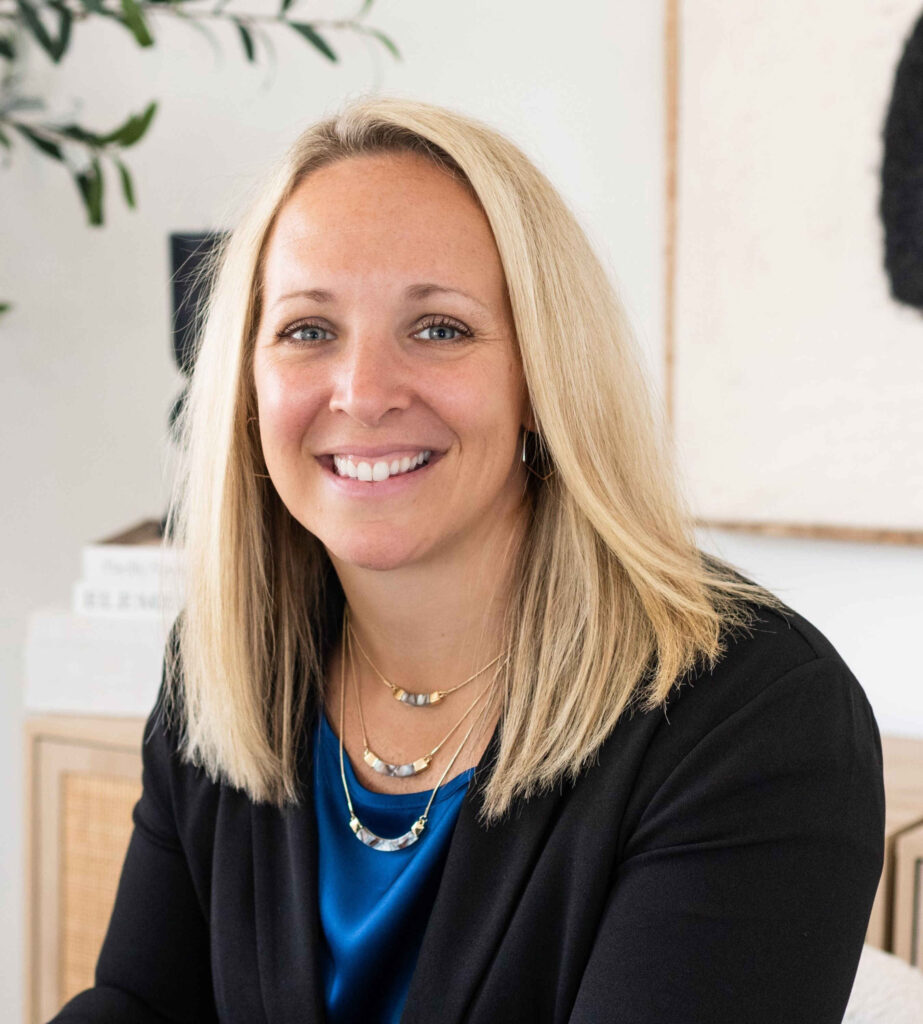January 24, 2025

Emily, let’s start with an introduction. Tell us a bit about yourself—your journey, what inspired you to become a leadership and operations consultant, and how your work is making an impact today.
Hi, I’m Emily Adams—a leadership and operations consultant with a passion for transformation and growth. My journey to this work has been anything but conventional. I was born and raised Amish, and leaving that community at 17 sparked a transformation in my life. Navigating culture shock and building a new life from scratch taught me resilience, adaptability, and the power of self-leadership. Those early experiences became the foundation for my career. I climbed the corporate ladder in the automotive industry, where I earned recognition as a top 3% female leader.
Along the way, I discovered my passion for helping leaders and teams grow and expand. With a degree in Organizational Leadership and Supervision from Purdue University, I honed my skills in streamlining operations and creating impactful leadership strategies. Today, I partner with businesses and leaders across industries to navigate change, optimize processes, and build high-performing teams. My work isn’t just about solving problems; it’s about creating clarity, helping them grow, and ensuring they have the processes in place to sustain the growth. Whether it’s guiding CEOs through tough decisions, helping companies save costs without layoffs, or empowering individuals to embrace and grow in their leadership positions, I’m driven by the belief that effective leadership and efficient operations can transform not just businesses but lives.
That’s amazing! I love how your story reflects not just expertise but passion. You’re known for simplifying operations and making complex processes more efficient. That’s a real gift because so many people struggle to get things streamlined!
What’s your approach to breaking down complicated systems, and how do you ensure teams stay aligned with the bigger vision while managing the day-to-day details?
My approach to breaking down complicated systems begins with clarity. I believe that no system is too complex when you take the time to understand all the moving parts, purpose, and the people driving it. I start by conducting a deep dive into the system, asking questions like: What’s working? What’s not? What are the outcomes we’re trying to achieve? This often involves mapping out processes, identifying bottlenecks, and analyzing data to uncover root causes. From there, I focus on simplification. Complexity often arises from inefficiencies, redundancies, or lack of clear communication. By streamlining processes, aligning them with the organization’s goals, and eliminating waste, we create a system that is both effective and easy to manage.
To keep teams aligned with the bigger vision while managing day-to-day details, I emphasize communication and accountability. It’s critical to connect every task or project to the overarching goals of the organization. I work with leaders to clearly articulate the “why” behind their vision, ensuring every team member understands their role in achieving it. Regular check-ins, KPIs, and progress reviews help maintain alignment and keep everyone focused on what truly matters. But it’s not just about strategy—it’s also about culture. I encourage teams to adopt a mindset of continuous improvement, where they’re empowered to make decisions, share ideas, and take ownership of their work. When people feel connected to the vision and understand how their efforts contribute, they naturally stay engaged and aligned, even when juggling day-to-day responsibilities. Ultimately, it’s about balance and keeping the big picture in mind while creating systems that drive success at every level.
I love that! Simplification doesn’t mean cutting corners—it means working smarter and creating clarity.
Can you share a time when you led a team through a significant transformation? What key steps made the difference in turning things around?*
One of the most significant transformations I led was for a software company struggling with inefficiencies in their operations and growing frustrations within the team. The organization didn’t have processes in place and employees were overwhelmed. The goal was to realign the team, streamline their operations, and start saving money that they knew they were losing. The first step was conducting a comprehensive process analysis to identify the root causes of the inefficiencies. I partnered with the team to map out workflows, evaluate team roles and responsibilities, and analyze data for variability and bottlenecks. We discovered that unclear expectations, redundant tasks, and a lack of processes were some of the top issues. From there, we focused on simplification and alignment.
I worked with the team to put in processes, clarify goals, and eliminate redundancies. We implemented cross-training initiatives to enhance flexibility and resilience within the team. I also introduced measurable KPIs tied directly to their strategic objectives, so progress could be tracked in real time. The results were transformative. Not only did the team achieve a $2Million in cost savings by putting processes in place, but they also regained confidence in their processes and strengthened their working relationships. The key to turning things around was focusing on both the systems and the people. By aligning operations with the company’s vision and empowering the team, we created sustainable change that continues to drive their success.
How can we stay in touch ?
https://www.threads.net/@emilyadams_
https://www.youtube.com/@EmilyAdams_
https://www.linkedin.com/in/emilyadamsoperationalefficiency/
https://www.facebook.com/emilyadamm/
https://transformativeleadershipllc.com/
https://link.transformativeleadershipllc.com/widget/bookings/schedule-30-emily
Link for book: https://amzn.to/421PcYU

Do you, or someone you know, deserves recognition for their hard work and innovation?
Comments